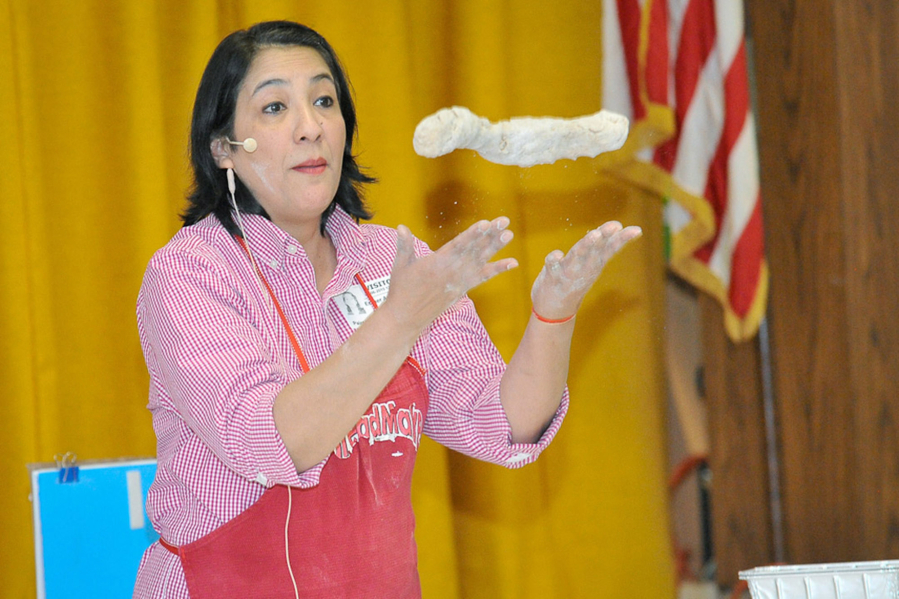In the cafeteria of Paint Branch Elementary School in College Park, Md., nearly 80 students were focused and smiling as Esther Arce-Reed tossed a roll of dough into the air during a demonstration that went much further than just making a loaf of bread.
Bread-making has been part of the curriculum in schools across the country for decades, and although culinary arts have been replaced in many districts with lessons in science, computer technology and robotics, Arce-Reed and her husband, Raymon Reed, are proponents of bread-making as a window to learn key math concepts through measurements.
“The idea is for school children to have an experience that they can remember for the rest of their lives,” Arce-Reed said. “They are given the opportunity to experience math, science and nutrition concepts, but in a way that they are fully engaged and can take ownership.”
On Feb. 4, a group of fourth-, fifth- and sixth-grade students at the College Park school were seated at tables that contained bowls, measuring cups and rulers. Each table was lined with paper so the flour, yeast, salt, brown sugar and water could be rolled to make dough.
“It is good for the kids to get some hands-on experience with science and math through bread-making,” said Paint Branch Principal Emmett Hendershot. “We have had (the Reeds) here for the last two years.”
Arce-Reed said she first learned about bread-making as an educational tool in 2009, when she saw Gloria McAdams give a demonstration at Maryland’s Greenbelt Elementary school. In the 1970s, McAdams, a native of Texas, created a curriculum called “Breadmake: Hands-On Science, Real Life Math.”
“I was a parent volunteer, my daughter was in the first grade, and I felt the energy and the method of teaching was impressive,” said Arce-Reed, an early childhood teacher who put together her own program, “Breadmaking EZ.”
But how do children learn about science and math through bread-making?
“Where does salt come from?” asked Reed, who picked up a big salt rock during a demonstration. “It comes from a rock that is mined from the earth. Where does flour come from? It comes from wheat that is grown. Where does sugar come from? It comes from sugar cane. This is science.”
Reed said math and nutrition are also taught through the preparation part of the demonstration.
“To make the dough, we follow a recipe with all of our raw materials. The flour, salt, sugar and all of these things are measured,” he said.



